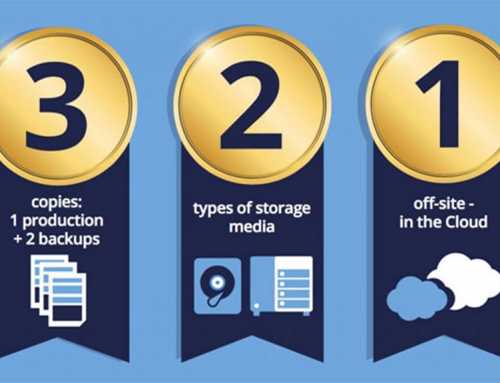Anything from a lack of vision to a lack of skills can doom your digital transformation. Here’s how to remedy the common ills of a transformation gone wrong.
By Dan Tynan | CIO | Oct 8, 2018 3:00 AM PT
See original article at https://www.cio.com/article/3310944/digital-transformation/8-digital-transformation-mistakes-and-how-to-fix-them.html
All around us, companies are using technology to transform their operations, respond more quickly to customer demands, and enable new business models.
At least, that’s what they’re saying. The reality, though, is often less rosy.
According to 451 Research, more than half of all retail, financial services, and healthcare organizations have launched a formal digital transformation initiative across the entire enterprise. Another 20 to 25 percent are taking a siloed approach, transforming one element of the organization at a time.
This year they’ll spend nearly $1.3 trillion trying to operate more efficiently, innovate faster, improve the customer experience, and stay ahead of all those pesky digital upstarts. But nearly three out of four large-scale transformation initiatives won’t actually reach their stated goals, according to McKinsey & Co.
Yours might be one of them. Why? The reasons are myriad. You may have made the mistake of thinking of digital transformation as simply a technology upgrade. You might not have the right talent to pull it off, or haven’t done a good job of persuading employees to play along. The business and tech sides of your organization may not be speaking the same language. Or perhaps top management got a little too ambitious and bit off more than your company could chew.
Here are eight issues that may be derailing your digital transformation — and how to remedy them.
1. You haven’t truly defined ‘digital transformation’ yet
For all the talk about digital transformation, there is no single definition that applies to every enterprise, or even applies across a single organization. For example, one in four executives surveyed by WiPro Digital in June 2017 admitted that people in their organizations can’t agree on what digital transformation actually means.
“Digital transformation has different meanings across different organizations,” says Rutesh Shah, CEO and co-founder of Infostretch, a digital-first professional services firm. “Finding the common definition that everyone agrees to as it relates to process, culture, technology, and use cases is the challenge.”
The problem is that “digital transformation” then becomes a catch-all for new tech projects, without any overarching strategy to guide it, he adds.
The fix: Instead of focusing on tech projects, organizations need to define their transformation initiatives around bigger, more fundamental issues.
“I consistently push companies to go back to the beginning, map out their current customer journey, and see how that can be improved,” Shah says. “Digital transformation is about cultural transformation, technology adoption, and process alignment to meet the agility demands. An app, chat bot, or AI may well be the answer, but the technology should always be the means to achieving a goal, not the goal itself.”
2. You treat digital transformation as a tech project
Organizations that embrace transformation but treat it solely as an IT project are primed for failure. While technology is a key enabler of transformation, it’s really just a means to a larger end, says Mark Ranta, head of digital banking solutions at ACI Worldwide, an electronic payments platform.
“Organizations that fully embrace transformation as a corporate mindset shift as well as a technology shift are the ones that are the most successful,” says Ranta. “If the investment is only happening on the technology side without the full support and cooperation of the business side, then transformation is doomed from the start.”
Kip Wetzel, principal of the digital transformation and customer experience practice at management consulting firm Navigate, says an empowered enterprise digital team is essential for priming the transformation pump, but relying too heavily on IT can prevent companies from achieving a digital-first mindset.
“Too many organizations think digital transformation starts and ends with their CIO, CTO, or chief innovation officer,” he says. “Fostering behavioral change helps to infuse an innovative and opportunistic mindset across the business.”
The fix: Stop focusing on the technology and start focusing on what your customers want, says Brian Solis, principal analyst for Altimeter.
“Most companies start with the technology,” says Solis. “They need to stop and ask themselves how their customers are making decisions, where they start their journey, where they go from there, and why. Then they need to figure out the technologies that will get them there, and the strategies need to make those technologies effective.”
3. IT and business speak different languages
Even when digital transformation is a collaborative effort, differences in the way tech pros and business leaders define terms can lead to frustration, delays, and poor execution.
“IT and business leaders are two groups separated by a common language,” jokes Robert Reeves, co-founder and CTO of Datical, a database release automation provider.
For example, when IT uses the term “minimally viable product,” they may focus on “minimally,” while business leaders focus on “viable,” he adds. Or a business leader might say an app needs to support 100,000 concurrent users, even though it may have only 100 concurrent users at launch, but IT takes that requirement literally.
The result: Tech teams will build a product that works on one specific machine configuration with a minimal number of features, while the business side expects an app that supports all potential users. Or IT will overbuild the solution while the business side wonders why this process is taking so long. That can lead to a lot of uncomfortable post-release meetings, notes Reeves.
The fix: By defining terms like “minimally viable” and “concurrent” as a group, the transformation team will arrive at the same set of expectations at the same time.
“Simply asking ‘What does viable mean in this case?’ followed up by ‘What does that do for us?’ will help,” Reeves says. “By focusing on the things that really matter, the company can get to that minimally viable product more quickly.”
4. Your transformation team lacks the necessary skills
A big mistake many companies make is launching a DX effort without having the appropriate skills in house.
“One of the biggest hurdles companies face is hiring the right talent to help them through their transformation,” says Vishal Makhijani, CEO of online training firm Udacity. “Legacy companies in particular need to focus on retraining and upskilling their current workforce.”
More than half of global organizations say a digital talent shortage is hampering their ability to complete transformational initiatives, according to a 2017 survey by the Capgemini Digital Transformation Institute. The gap is particularly acute in areas like artificial intelligence and machine learning, which are crucial to many transformation efforts.
“We’ve seen artificial intelligence become a major player in fields like HR, talent, and finance,” says Ed Donner, co-founder and CEO of digital talent marketplace untapt. “Entering the coming years without AI in your digital transformation plan would be like running a company today without cell phones.”
The fix: If you don’t possess the requisite skills in house, you may need to bring in outside help, says Alex Solomon, co-founder and CTO of PagerDuty, a digital operations management platform.
“Companies don’t always hire the right leaders to implement the transformation,” says Solomon. “Transformation requires making a lot of changes in way people work and how they’re organized. Similarly, you can’t also expect some existing leaders to make the change on their own, you need to inject new DNA from people who have implemented these types of changes before.”
5. Your employees are not on board
You’ve mapped the customer journey, flattened out the org chart, created agile cross-functional teams, and invested heavily in tech that will allow you to zero in on customer pain points and respond in real time. But it’s all for naught, because your employees are still doing things the way they’ve always done them.
“Over and over again we see companies invest in the latest technology and then find their people are not using it, or the technology doesn’t deliver any business results and the initiative quickly gets abandoned,” says Andrea Schnepf, principal for nepf, a digital transformation consultancy. “This results in a perception that it was a waste of time and money and that they should have stuck to the old ways of working.”
That may be because you’ve done a bad job of explaining the reasons for all these changes, says Nic Milani, director of technology and development at Crestron, a global provider of control solutions for homes and buildings.
“When companies roll out a new technology they often focus on training employees how to use it, when they should really be focused on the ‘why,’” he says. “If you don’t explain to employees why you’re rolling out this technology and the benefits it will bring, you’ll struggle with adoption.”
The fix: A better strategy is to engage employees before you embark on that big transformational project and ask them what their pain points are, says Puneet Gangal, CEO & founder of Aciron Consulting.
“It’s important to engage end users early to help you find solutions that address their needs,” he says. “Providing training and support after deployment will help ensure user adoption.”
6. You’re unwilling to make hard choices
Adopting new technologies and processes can lead to some painful personnel decisions. That’s because some people see transformation as a threat and will do everything they can to prevent it, says Tom Dannemiller, CEO of Sabia, makers of process control systems for the cement and mineral processing industries.
“Transformation exposes information about operations across departmental lines and management levels, and there are a lot of people who may not be happy about that,” he says. “Long-standing myths about operations become exposed. The sources of problems are uncovered, and that process may not be complimentary to the folks who are responsible for the project’s success.”
Cathy Miron, president and CEO of eSilo, a software and IT services company, spent many years at GE leading company-wide transformation initiatives. She says it’s important top management makes it clear that there is no other option.
“If you ask your employees to embrace new technology and use it to solve problems, you need a way to show that, from the CEO on down, every level of senior leadership is doing the same,” she says. “At GE this meant we had to let go of many middle managers to show employees and prospective hires we were serious about this transformation. This was a difficult change to overcome, but necessary to demonstrate our full commitment to what we were becoming.”
The fix: You may have to let go of those who resist change, says Solomon.
“Change is hard, and some folks will resist that change,” Solomon says. “If those folks cannot be brought on board with the new ways of working, you may have to move on from using their services.”
7. You tried to do too much, too soon
Though digital transformation can be all-encompassing, getting too ambitious at the start is another recipe for failure — especially if you’re trying to overcome internal skepticism. (That same WiPro survey showed that nearly one out of five senior execs secretly believe transformational initiatives are a waste of time.)
“After years of ERP roll-outs, no one wants to sign up for a long, expensive project,” says Chris Smith, CEO of Detechtion, which provides an IoT platform for oil and gas companies. “We fully support getting rapid initial success and proving out projects. Those quick hits can build a lot of momentum.”
The fix: As with most enterprise-wide IT initiatives, you want to start by selecting more manageable targets and showing early positive results.
“Big change takes time, especially in larger companies, and people will begin to lose faith if they don’t see tangible progress or think you’re boiling the ocean,” says Miron. “If it is taking more than three to six months to deliver your first success story, it’s taking too long. Try breaking the effort up into smaller phases, so long as they can deliver concrete value on their own.”
8. You think you’re done. (You’re not done.)
Many companies approach digital transformation as a destination when it’s really more of a never-ending journey.
“In reality, we have been on this journey since computing was first applied to automating business processes, and candidly, that transformation isn’t, and likely will never be, complete,” notes Regina Salazar, CIO of global product organization at Whirlpool.
The fix: Accept that transformation is the new normal, and adjust accordingly.
“Companies need to realize that digital transformation is a process,” says Reeves. “Simply taking advantage of new technology like the cloud is not good enough. You must continue to transform, improve your business. Lather, rinse, repeat. You must diligently require your entire organization to constantly improve, become faster, more efficient. After all, your competitors are doing the same.”
Need help with your digital transformation? Contact us here or at info@esilo.com for a complimentary consultation with our CEO, Cathy Miron.





